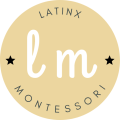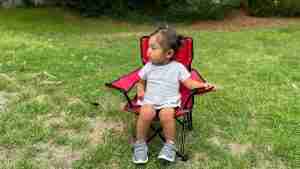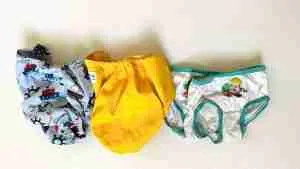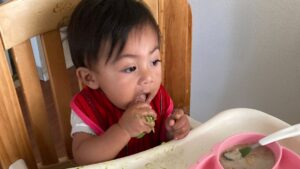
6 Types Of Cloth Diapers: Comparison, Cost, Pros And Cons
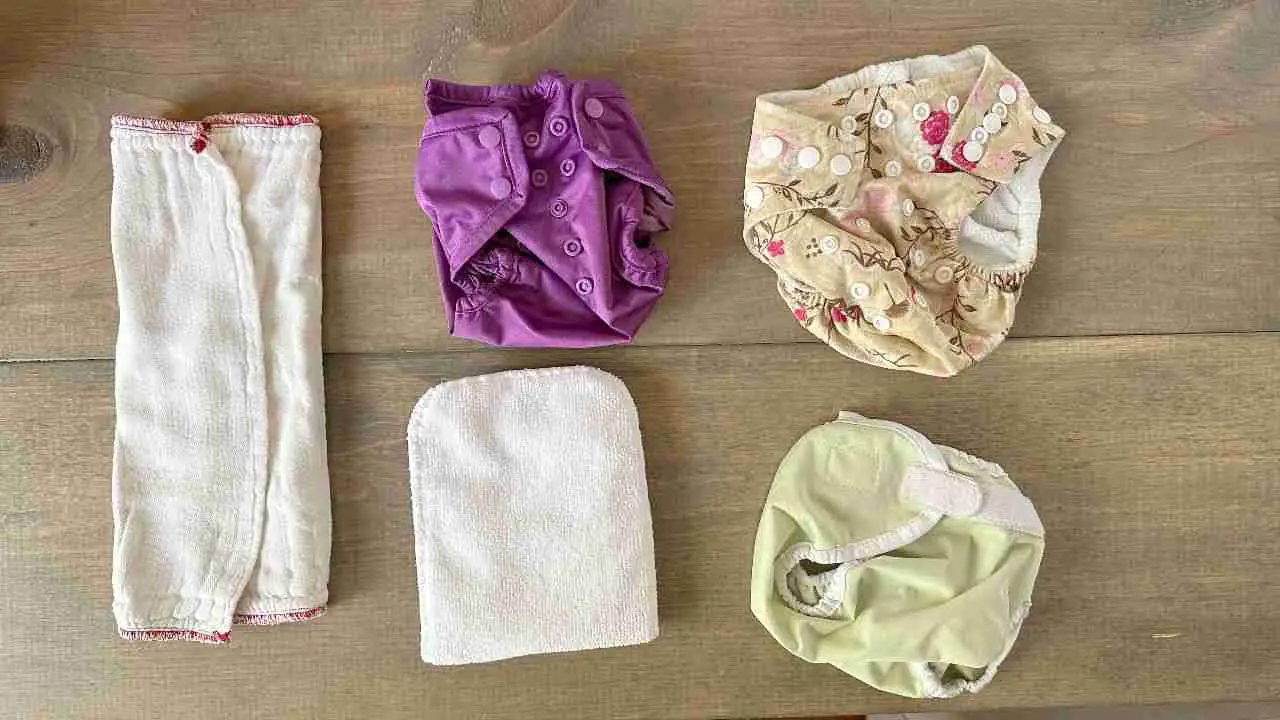
*Disclosure: I only recommend products I would use myself and all opinions expressed here are our own. This post may contain affiliate links that at no additional cost to you, I may earn a small commission. Thank you for your support!
Share this post
Here is everything you need to know about the types of cloth diapers based on our experience.
The six types of cloth diapers are All-in-One (AIO), All-in-Two (AI2), Pocket, Prefold, Fitted, and Flat.
The cost, material, quantity needed, and the way you use them varies from diaper to diaper. But don’t worry, we’ll go into detail about each type.
We cloth diapered our daughter since she was a newborn, so we know quite a lot about cloth diapers.
And to be honest, we wish we had known all of this information before we began cloth diapering, so we are going to share our knowledge with you.
Let’s jump right in.
Types of cloth diapers comparison chart
| Type of Cloth Diaper | All-in-One (AIO) | All-in-Two (AI2) | Prefold | Fitted | Flat | |
| Cost | $14.99-$17.99 | $11.95-$23.95 | $11.95-$23.95 | $10 for a pack of 6 | $8.55-$18.99 | $9.98-$19.99 |
| Number of Pieces | One | Two | Two | Two | Two | Two |
| Requires Separate Cover? | No | Yes | Yes | Yes | Yes | Yes |
| Absorbent Part | Sewn-in | Insert | Insert | Tri-folded diaper | Whole diaper | Flat sheet |
| Pros | Maximum convenience, no additional components, quick changes | Convenience and customization, cost-efficient, quick to dry | Customizable absorbency, ease of use, quick drying | Cost-effective, versatile, durable | Contoured fit, convenient fastening, excellent absorbency | Budget-friendly, quick-drying, customizable |
| Cons | Longer drying time, high cost | Slight assembly required, bulky | Requires stuffing and disassembly, risk of leaks if not stuffed properly | Requires folding and securing, needs a separate cover | Bulkier, requires a separate cover | Requires folding and securing, needs a separate cover |
Types of cloth diapers
For each type of cloth diaper, we will give you a description of what it is, what we like about it, how many you will need, estimated cost, and pros and cons.
1. All-in-One (AIO) cloth diapers

All-in-One (AIO) is a one-piece cloth diaper with an integrated absorbent layer, known as an insert, attached to the outer shell also known as the cover.
Since everything is in one piece, you do not need separate inserts or covers. This closely resembles a disposable diaper but made out of cloth.
They have an adjustable closure system at the waist with either snap buttons or hook and loops, so it fits babies of various ages.
What we like: AIO diapers are very convenient and easy to use. You just put them on your baby and adjust the size accordingly.
When it’s time to change your baby, just take them off, rinse them, and throw them in your diaper pail.
How many you will need: We recommend that you have at least 3 days worth of clean cloth diapers.
So assuming that you’ll change diapers about 12 times per day, which is average, especially for newborns, you will need about 36 AIOs.
Cost: Each AIO cloth diaper can cost between $14.99 and $17.99.
Pros: The biggest benefit is that you just put them on like disposables and adjust them. You also don’t need additional inserts or covers, which can save you money in the long run.
Cons: They take longer to dry mainly because they are thicker, so you’ll have to be patient and have extra diapers readily available.
AIOs can also be a bit pricier than other options due to their convenience and all-in-one design compared to All-in-Twos which I’ll talk about next.
Our recommendation: Imagine Baby All-in-One Cloth Diaper.
2. All-in-Two (AI2) cloth diapers

These are our favorite types of cloth diapers and the ones we used the most.
All-in-Two (AI2) cloth diapers come in two pieces: a waterproof shell and snap-in or lay-in absorbent inserts.
When your baby pees or poops, you can remove the insert and reuse the shell at least twice. This eliminates the amount of outer shells you need, which can be cheaper in the long run.
You can also adjust the cloth diaper depending on the age of your child, so you’ll be using them for a very long time.
What we like: AI2 cloth diapers combine the convenience of one-piece designs with the ability to adjust absorbency as needed.
These are good options if you are on a low budget and need something that is leak proof.
How many you will need: Using the same assumption as before, you will still need 36 inserts but maybe only 18 shells, plus a couple more just to be safe.
Cost: You can spend about $11.95-$23.95 per shell and about $2.77 per insert or about $16 for a pack of 6 inserts.
Pros: AI2 cloth diapers provide the best of both worlds: convenience and adjustability. As mentioned before, AI2 cloth diapers can be more cost-effective than all-in-one options.
What we liked the most is that you can use the shell twice before you wash it. You only have to wipe the shell and add a clean insert.
They also dry quicker compared to AIOs because the insert and shell are not bulky once you separate them.
Cons: The only minor inconvenience is that you’ll need to snap or lay in the inserts and this adds an extra step when you change your baby.
So if you are on the go, I suggest you snap the inserts in the shell before you head out.
Also, the insert needs to have a snap button so you can use it with the diaper, otherwise, the insert can slide around.
Our recommendation: Buttons One Size Cloth Diaper Cover with Osocozy Bamboo Cotton Snap In Diaper Inserts.
3. Pocket cloth diapers
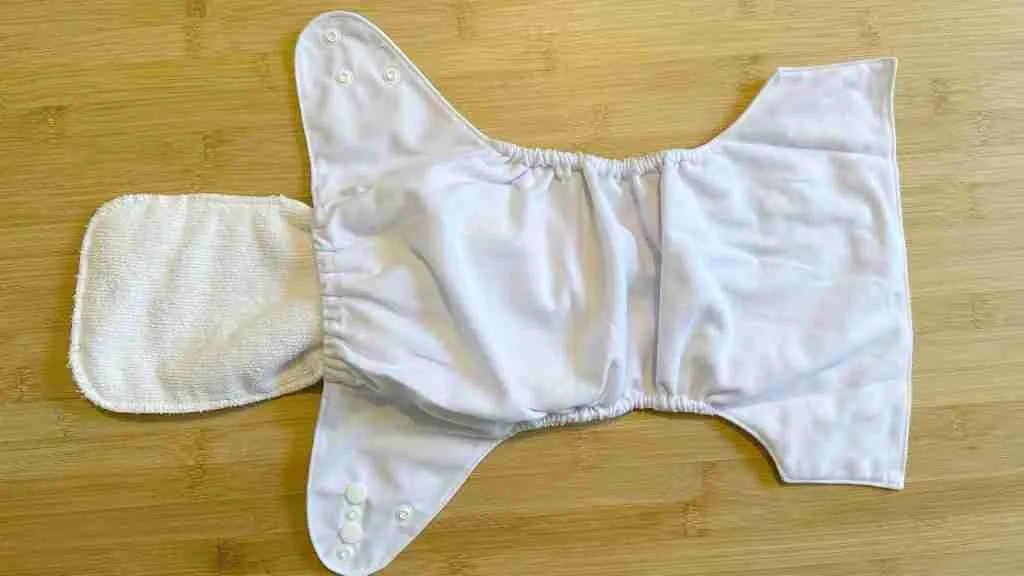
These are our second favorite types of diapers.
Pocket diapers are similar to an AI2 cloth diaper in the sense that they also come in two pieces, but instead of snaps, they have a pocket for the insert.
Essentially, they consist of a waterproof shell with a pocket opening to insert absorbent inserts. And since they don’t have any snaps, you can use different inserts made of various materials.
What we like: We could customize the absorbency by adding or removing inserts as needed so our baby stayed comfortable and dry.
How many you will need: You will need about 36 inserts and 36 waterproof shells. The pocket of the diaper is made of cloth so it cannot be reused.
Cost: Similar to AI2, you can spend about $11.95-$23.95 per shell and about $2.77 per insert or about $16 for a pack of 6 inserts.
Pros: You can tailor the absorbency to your baby’s needs by adjusting the number of inserts, but keep it to one or two only. The diaper will get very bulky if you use 3 inserts.
And the fact that the inserts can be removed means that pocket diapers dry faster than all-in-one options.
Cons: You cannot reuse the shell because the pocket is made of cloth and will get spilled after a pee.
The other minor inconvenience is that you have to add the insert in the pocket but this doesn’t take long. It is actually simpler than snapping it in the AI2 diaper shell.
You also have to make sure that the pocket is inserted correctly to prevent leaks.
Our recommendation: Imagine Baby Snap Pocket Diapers with Best Bottom Stay Dry Cloth Diaper Inserts.
4. Prefold Diapers

Prefold cloth diapers are one of the most affordable types of cloth diapers and their design is very simple.
They are basically a piece of square fabric consisting of multiple layers and pre-folded into three panels. The middle panel is the most absorbent.
Essentially you are creating an insert when you fold this cloth diaper. You’ll need to secure them with pins or a Snappi or use a pocket diaper shell.
We had a few prefold diapers but used them as inserts. The diaper itself is not adjustable but you can place it in an adjustable shell.
What we like: The only thing we liked was the affordability of these cloth diapers.
How many you will need: Again, you’ll need about 36 shells and 18 to 20 prefold diapers.
Cost: You can buy a pack of 6 for about $10.
Pros: They are affordable and great if you are on a budget.
Cons: You have to fold them and this can get annoying. If you are new to cloth diapering, this may not be the best option unless you need something inexpensive.
Plus, you’ll need a waterproof shell to prevent leaks.
Our recommendation: Nicki’s Diapers Cotton Prefold Cloth Diapers.
5. Fitted Diapers

Fitted cloth diapers have elastic around the legs and waist which contour perfectly to your baby’s shape and fasten easily with snaps or hook-and-loop closures.
They are better at preventing leaks compared to prefold cloth diapers mainly because of the elastic part. However, you still need a shell to make the entire system waterproof.
They can be a little less expensive compared to AIO and AI2, depending on the brand.
What I like: We liked how they provided a secure, snug fit, and prevented some leaks, especially around the legs.
You can also use them as overnight cloth diapers because they absorb a good amount of fluid, but again, you need to pair them with a shell.
How many you will need: As with the previous diapers, you might need 36 fitted cloth diapers and 18 to 20 shells.
Cost: You can spend $8.55-$18.99 per diaper.
Pros: The biggest benefit is that these fitted cloth diapers are tailored for a snug fit and this reduces the risk of leaks.
The snaps and hook-and-loop closures also make it easy to put on and adjust as your child grows
If you are potty training, you can use a fitted cloth diaper because the absorbency is good but as your child grows and pees more, you might have to switch to overnight diapers.
Cons: Like some of the cloth diapers we mentioned, fitted cloth diapers don’t usually have a waterproof layer, so you’ll need a separate diaper cover.
Our recommendation: Thirsties Natural Fitted Diaper.
6. Flat Diapers
Flat diapers are like the OGs of cloth diapers. These are the ones we wore when we were babies.
They are similar to prefold cloth diapers but only have one layer and are very thin. The only time you should use them is with a newborn because newborns don’t pee and poop a lot.
You can fold them and use them as an insert or wrap them around your baby like a fitted cloth diaper and secure them with Snappis.
What we like: We only used them a few times just to try and what we liked was the simplicity. You simply rinse the soiled diaper and throw it in your pile of dirty clothes.
How many you will need: I recommend you only use these with a newborn. With that said, you’ll need about 30 shells and 15 flat diapers.
You can hand-wash and air-dry them so you’ll always have some available.
Cost: The cost of fitted cloth diapers can be as low as $9.98 for a pack of six and up to $19.99.
Pros: These are the most affordable cloth diapers and are perfect for newborns.
Cons: Again, these are best for newborns. This means that you’ll have to invest in other types of cloth diapers soon. You also need separate shells to make them waterproof.
Our recommendation: Nicki’s Diapers Bamboo Flat Cloth Diapers.
Choosing the right cloth diaper size
When it comes to size, you have two options: newborn and One-Size (OS).

Newborn Size
Newborn-sized cloth diapers are designed to fit babies from birth to around 10 pounds, depending on the brand.
These diapers have a narrower crotch and a smaller rise to accommodate a newborn’s small body. They are less bulky under your newborn’s clothes and more comfortable.
The only thing to consider is that newborn-size cloth diapers are only good for the first 3 months at the most and your baby will outgrow them quickly.
This means that you will eventually have to invest in One-Size cloth diapers.
One-Size (OS)
One-Size (OS) cloth diapers, also known as adjustable, are designed to accommodate your baby from birth to potty training.
These versatile diapers have snaps or elastic features that allow you to adjust the size as your child grows, which makes them an economical and environmentally friendly choice.
This means that you won’t need to purchase multiple sizes. And compared to disposable diapers, you can save a lot of money in the long run.
We compared the cost of cloth vs disposable diapers. You’ll be surprised by how much money you can save.
The only drawback is that even though you can use OS diapers with your newborn, they are too bulky, especially if you have a small baby.
Common cloth diaper materials
The choice of materials can significantly impact their performance, comfort, and price.
Cotton
Cotton is the most common choice for cloth diapers. It’s very soft on your baby’s skin and has good absorbency. It is often used in prefold and flat diapers.
Hemp
Hemp is a natural and eco-friendly material that is highly absorbent. This is a good material for inserts because it can absorb a good amount of fluid.
Hemp is also a sustainable material that requires fewer resources to produce, so you’ll know you’ll be helping the environment if you choose this option
One thing to consider is that hemp can be slower to absorb moisture and your baby may feel the wetness of the insert.
Bamboo
Bamboo is another natural and eco-friendly material that is also soft and has good absorbency properties.
Just note that bamboo may require more delicate handling during washing to maintain its softness and integrity.
Microfiber
Microfiber is a synthetic material designed to be highly absorbent, which makes it a popular choice for inserts in pocket diapers.
It also has excellent wicking properties and can absorb a large amount of moisture which reduces the risk of leaks.
PUL (Polyurethane Laminate)
PUL is a waterproof material used in the outer layers of many diaper covers and All-in-One diapers. It’s designed to prevent leaks and keep your baby dry.
It is very easy to clean and this is why you can use it multiple times. Usually, you can just spray it with water and wipe it or rinse it and hang dry it.
One thing to consider is that your baby can get uncomfortable in hot weather because the shell may trap some heat.
The effectiveness of PUL may also be reduced if you machine-dry it. We hang-dried our shells and they are still in great condition.
Wool
Wool covers are made from natural and breathable wool fibers and offer excellent moisture control and breathability. This makes them great for nighttime use.
And because of its good breathability, it can help regulate your baby’s temperature and reduce the risk of overheating.
Cloth diaper material comparison table
Material | Pros | Cons |
Cotton | Soft and comfortable | Slower drying |
Microfiber | Excellent absorbency | Prone to compression leaks |
Hemp | Eco-friendly, high absorbency | Slower absorption, stiffer texture |
Bamboo | Eco-friendly, silky soft | Slower drying, delicate care |
Fleece and Suedecloth | Stay-dry feel, easy to clean | May require frequent washing, potential compression leaks |
PUL (Polyurethane Laminate) | Waterproof, easy to clean | Can trap heat, may wear over time |
Wool | Breathable, natural water resistance | Special care required, potential for shrinkage |
Cloth diapers cost
You can spend around $800 on a set of 36 cloth diapers, depending on the type you buy.
While the initial investment is higher than disposable diapers, you will save a significant amount of money in the long run, especially if you plan on having more than one child.
The initial cost includes the diapers, covers, and any accessories you might need, such as liners or cloth diaper pails.
Some other minor expenses include water and electricity for washing and drying, but these are very minimal.
The great thing about cloth diapers is that you can resell them for a small profit. Once your child outgrows them, you can recoup some of your initial expenses by selling them in good condition.
How to wash cloth diapers
You should always follow the manufacturer’s instructions for washing cloth diapers to maintain their effectiveness and longevity.
But here’s a basic guide on how to wash cloth diapers:
- Pre-rinse: After you change your baby, rinse the soiled diaper in the toilet to remove any solids. You can also use a diaper sprayer for this purpose.
- Storage: Store the soiled diapers in a diaper pail for cloth diapers until wash day. Avoid leaving them for too long to prevent stains and odors.
- Wash routine: Start with a cold pre-wash to remove initial soiling. Then, do a hot wash with a strong detergent, followed by an extra rinse to ensure all detergent residues are removed.
- Drying: Air drying is the gentlest option for your cloth diapers and helps prolong their lifespan. I don’t recommend you machine dry your cloth diapers, especially the shells.
- Avoid fabric softeners and additives: Fabric softeners and bleach can reduce the absorbency of cloth diapers, so try not to use any.
What to do next?
This is a very detailed guide on types of cloth diapers. We tried to make it as simple as possible to not overwhelm you.
You can check out my article about cloth vs disposable diapers cost so you can see how much money you can save on cloth diapers.
And don’t forget to buy a diaper pail for cloth diapers, it will make the entire diapering process easier.
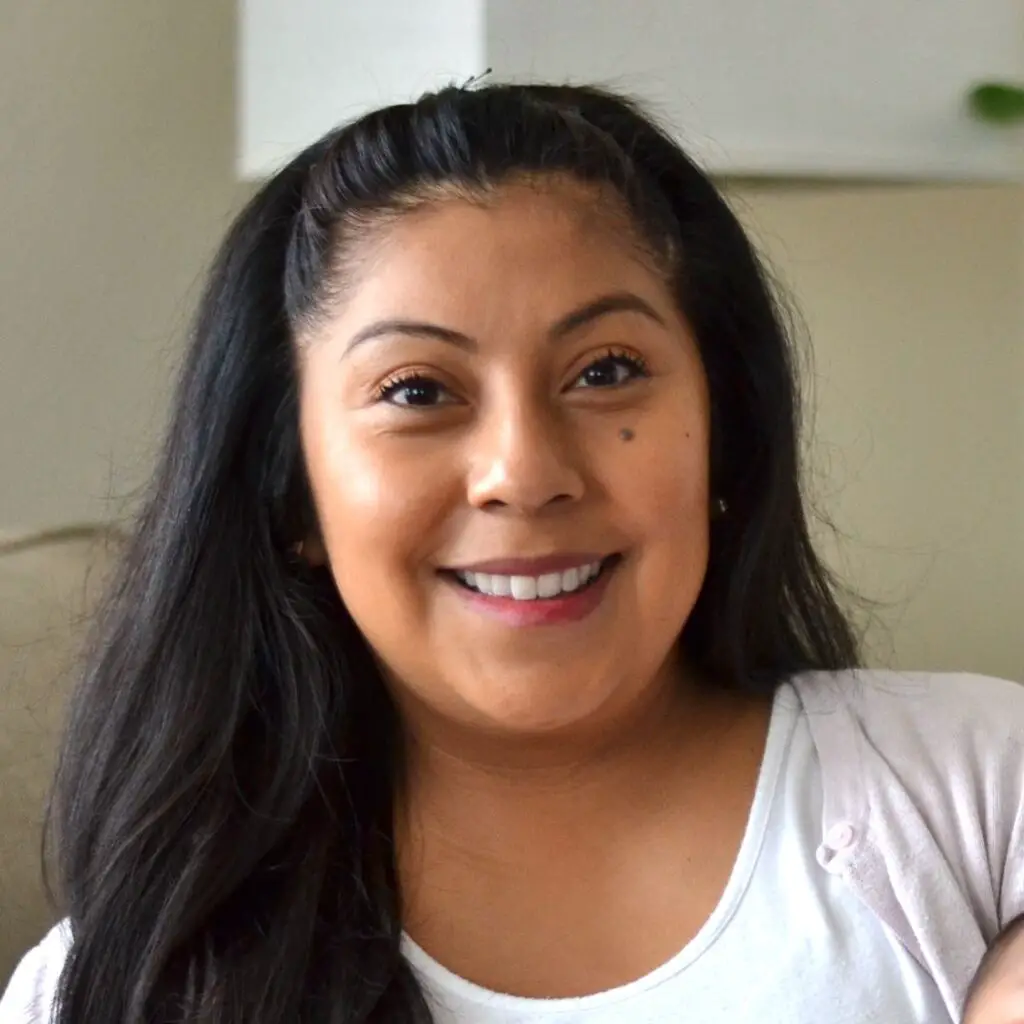
Hello, I am Leslie. I am on a mission to help you support the growth and development of your child. With the right tools and proper guidance, you can navigate parenthood with confidence and assertion! My goal is to equip you with knowledge to help you construct a strong foundation for your child’s life.
Suggested articles
You May Also Like
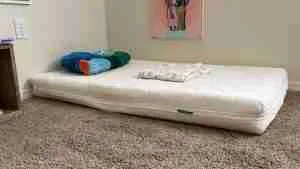
5 Powerful Benefits Of Montessori Floor Beds
A Montessori floor bed gives your child the freedom to move independently, promotes gross motor skills and spatial awareness, encourages a sense of autonomy, and fosters a strong connection with their surroundings.
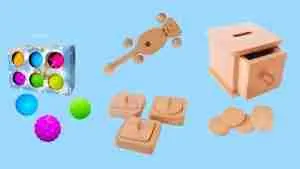
9 best Montessori toys for 6 month old babies
These are the best Montessori toys for 6 month old babies to improve their fine and gross motor skills and cognitive development.
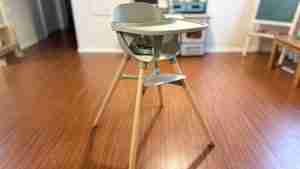
Lalo high chair review: Know this before you buy
The Chair by Lalo is a 3-in-1 high chair that can be converted into a toddler play chair and a booster seat and is designed to support your baby even before they can reach the footrest.
